Heather Schneider
Our November Conservation Champion, Dr. Heather Schneider, brings her intrinsic love of nature, scientific curiosity, and adventurous spirit to her rare plant conservation work at Santa Barbara Botanic Garden where she protects, restores, and advocates for California’s rare plants. Heather’s work to conserve the rare and endangered plants of the Channel Islands highlights the unique challenges and opportunities faced by practitioners working to protect island species, and the progress that can be made through partnership and collaboration. As Heather states, “We can all be a force for rare plant conservation, whether our actions are big or small.”
When did you first fall in love with plants?
I’ve always loved being outside. I grew up in the Midwest camping with my family and playing in our backyard, chasing lightning bugs and catching toads. But I didn’t find my passion for plants specifically until I was in college. Like a lot of kids, I was an animal lover and I think that school biology classes are biased towards animals, so I’d never considered a career in botany. When I got to college, I had the opportunity to take classes at The Morton Arboretum, another CPC Conservation Partner, that counted toward my biology major. I took a course on ethnobotany that was taught by a rotation of scientists from Chicago’s Field Museum of Natural History. I was blown away by the lives that these people led, the sense of adventure that their work entailed and the incredible science they were doing—all focused on plants. I took a taxonomy class focused on plants of the western Great Lakes and it opened my eyes and taught me the names of the plants I’d grown up with. After those two classes, plus an upper division ecology course on campus, I was hooked. I realized that studying plants could combine my love of nature and spending time outdoors with the scientific curiosity I was fostering as an undergraduate and I never looked back.
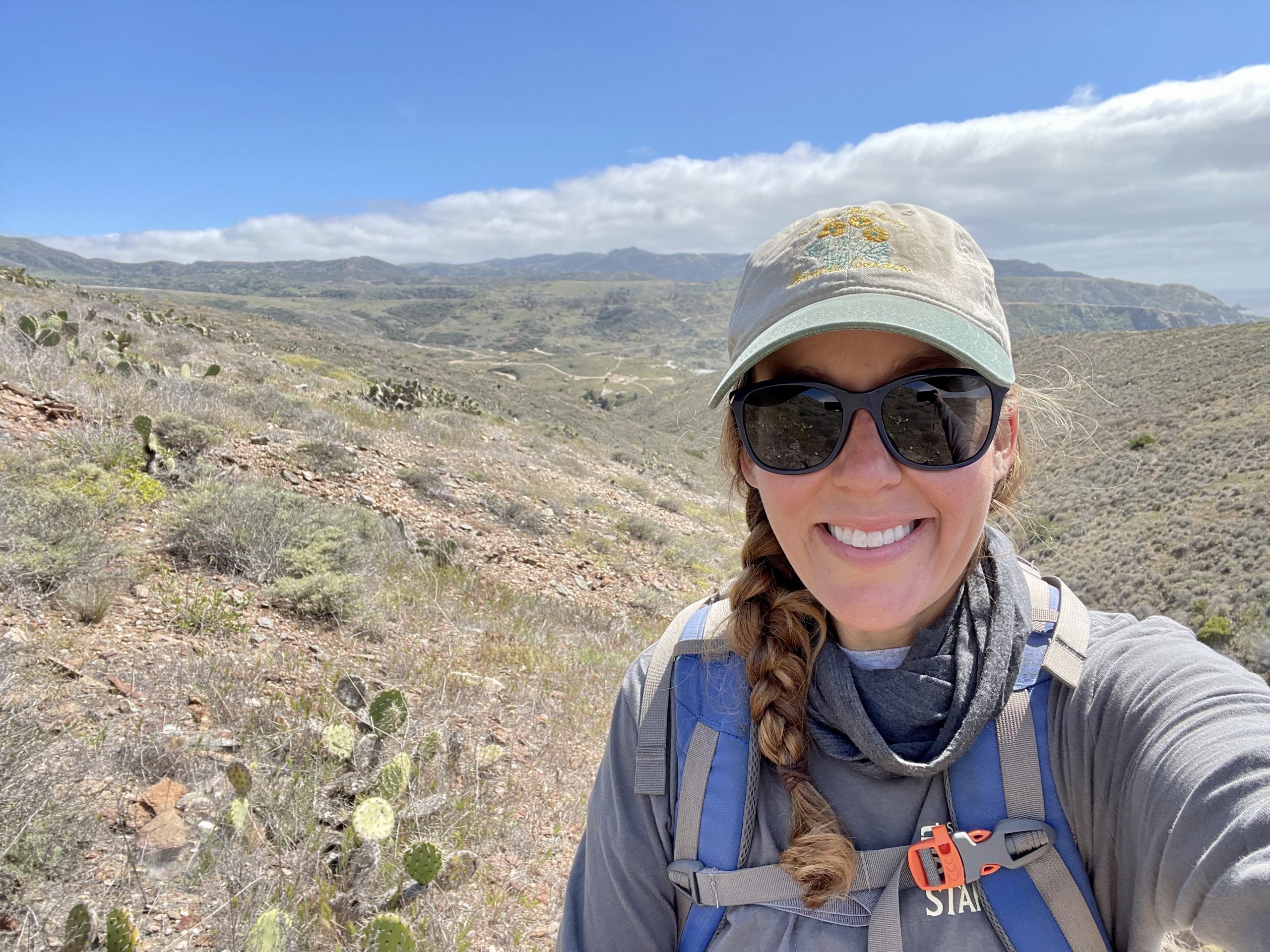
What was your career path to Santa Barbara Botanic Garden?
I went to a small liberal arts college outside of Chicago called Elmhurst University, where I majored in Biology. Although I didn’t have the same research opportunities that are available at large research institutions, I did have some unique opportunities like the classes at The Morton Arboretum and crafting a personalized internship with the Department of Conservation and Land Management in Katanning, Western Australia, where I spent 3 months working on a wide array of projects, including working in an herbarium and conducting rare plant surveys. That was when I realized that I could get paid to hike and go camping! I also had professors who got to know me and one in particular who suggested that I apply to graduate school. I had never considered graduate school—no one I knew had been and I didn’t know whether I had what it took. Thankfully, my mentor helped me hone in on my interests and find potential advisors to reach out to. From there, I earned a PhD at the University of California, Riverside studying the impacts of anthropogenic nitrogen deposition and invasive plants on California’s desert wildflowers.
After graduating, I worked for the US Geological Survey studying desert tortoises and their habitat before taking a postdoctoral fellowship at UC Santa Barbara. In Santa Barbara, I helped develop a first-of-its-kind research seed bank to study the evolution of wild plants (Project Baseline) and investigated the evolutionary ecology of two species in the genus Clarkia. When I saw the ad for the job at Santa Barbara Botanic Garden, I was excited to have the opportunity to focus on applied conservation work. As the Senior Rare Plant Conservation Scientist at the Garden, I get to focus all of my energy on understanding, protecting, restoring and advocating for California’s rare plants. I work with a great group of folks at our Garden and external collaborators who are all doing what we can to prevent extinction. I’ve been at the Garden for seven and a half years and am excited to see how much our team and our impact have grown.
In your experience, what are some of the unique and/or pressing conservation needs impacting the rare and native plants of the Channel Islands?
The Channel Islands are such a unique system in which to work—they simultaneously harken back to California’s past as refuges for relictual species like the island ironwood (Lyonothamnus floribundus), while also showcasing the incredible evolutionary processes that happen under the geographic isolation of island systems. Islands harbor a large amount of the unique biodiversity across the globe, but they have also suffered from a disproportionate number of threats and extinctions. One of the many threats that islands face is that they are isolated land masses and plants can’t move very far to escape threats. For example, when we think about potential climate change related translocations on the California mainland, we often think about moving things northward or upslope to chase cooler, wetter conditions. That’s harder to do on islands.

In California’s Channel Islands archipelago, we could potentially move plants to the next island in the chain, but that poses its own potential problems with gene flow and eventually we’ll run out of islands. However, the isolation of islands also provides opportunities. For example, there have been successful eradications of introduced animals on the Channel Islands precisely because they are relatively closed systems. So, we can tackle some problems on islands, like invasive Argentine ants, that would be impossible to address on the mainland. It’s a mixture of challenges and opportunities, so we try to leverage any advantages to the extent possible.
What conservation initiatives are you most excited about in the Channel Islands?
One of the things that I’m most excited about is the growth and expansion of collaborative conservation work across the Channel Islands archipelago. Santa Barbara Botanic Garden is part of a consortium of nonprofit, private, and governmental partners who are working on various aspects of island conservation and management across all of the California’s islands—the Islands of the California’s Botanical Collaborative (ICBC). ICBC includes partners working across the islands off the coast of both Alta and Baja California. We share lessons learned, share data, and are working towards a standardized rare plant mapping protocol for the entire Channel Islands archipelago. We’ve successfully fundraised for some large, rare plant conservation and recovery projects and have adopted a somewhat programmatic approach to our work: setting priorities, seeking funding and executing actions in a stepwise fashion. It’s been really inspiring to see so many different types of partners collaborate to advance conservation and recovery goals. We accomplish so much when we work together.
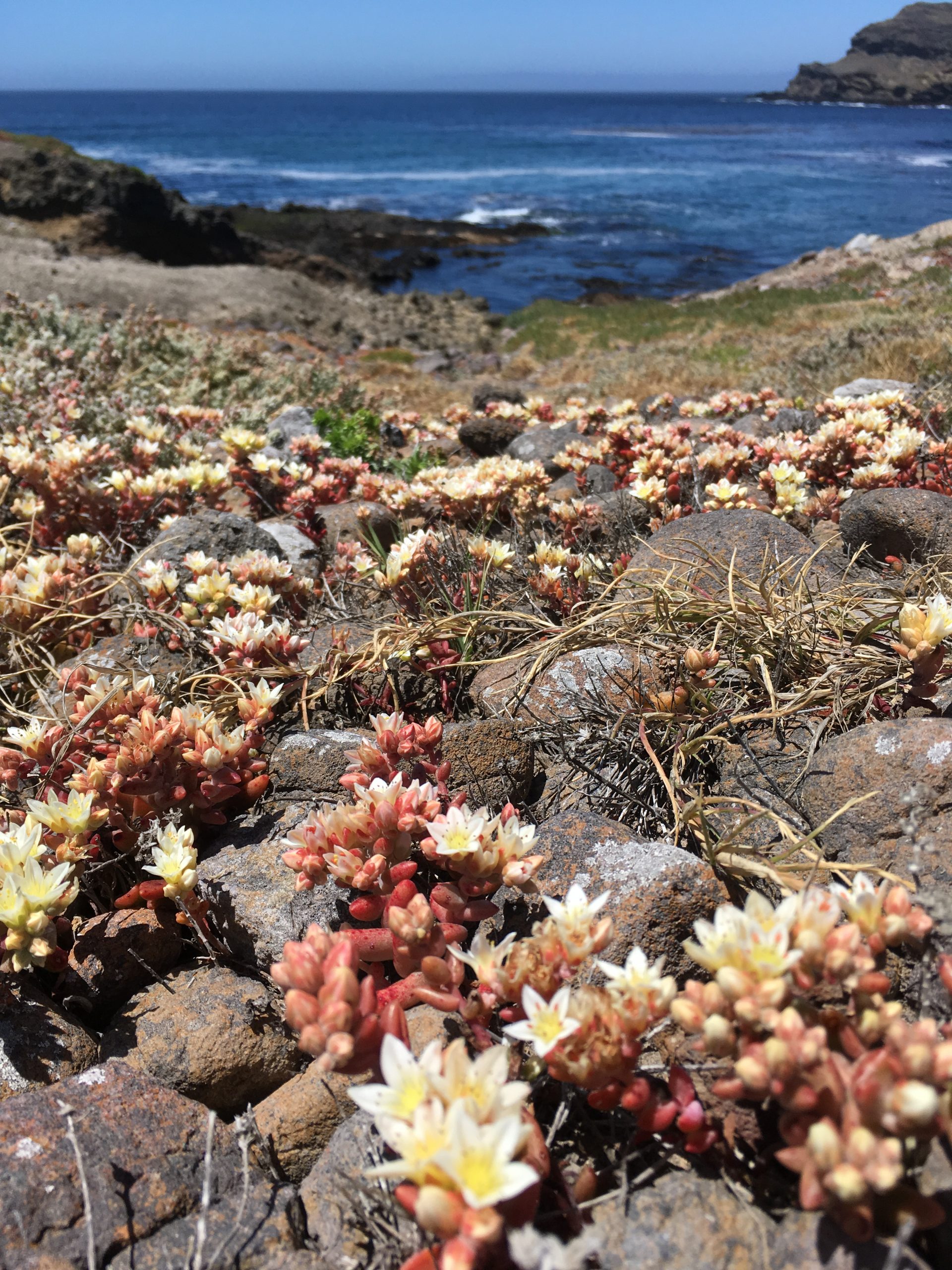
What successes or challenges have you encountered in your work?
We’ve had a few big successes that I’m excited about. Recently, I led a large collaborative project on seven of the eight Channel Islands (all except San Clemente Island). Our partners included The Nature Conservancy, Channel Islands National Park, USGS, California Institute for Environmental Studies, Wildlands Conservation Science, USFWS, US Navy and CDFW. Over the four years of the project, we documented 540 rare plant observations, brought 108 new conservation seed collections into the Garden’s conservation seed bank, discovered 12 previously undocumented rare plant populations and produced more than 400,000 seeds in the Garden’s nursery for population creation and augmentation on the islands. It was a huge effort that made a big impact on our ability to understand, protect and restore the islands’ rare plants. Now one of those plants, Santa Cruz Island liveforever (Dudleya nesiotica) has been proposed for potential delisting from the federal endangered species act, in part due to the recent surveys and status update that our team conducted, along with robust conservation seed banking efforts led by the Garden.
The biggest challenge of working on islands is always logistics. We access most of the Channel Islands via boat, so if seas are rough or we have prolonged storm systems come through, then we can’t get to the islands to do our work. Big rain years like we had recently can leave unpaved island roads impassable, making it difficult or impossible to access our field sites. Flexibility is the name of the game on islands – you have to roll with the punches and do what you can when you can. But logistical challenges can also be fun. I’ve hopped around Santa Cruz Island via helicopter, flown across the channel in a four-seat plane, been salt sprayed on skiffs and taken countless boat rides all in search of rare plants. There’s no shortage of adventure on the islands!
What has surprised you about working with and learning more about rare plants?
It has been such an honor to focus on rare plant conservation for the last seven and a half years. One thing that has surprised me about rare plants is what a great tool they are for engaging the public in conservation efforts. We all love an underdog and rare wildflowers are easy to love, but some people also wonder why something so uncommon could be important to preserve. However, they can also provide an introduction to conservation by connecting people to a sense of place and what makes that place special. I was working on a front country trail in Santa Barbara a few years ago when a woman stopped to ask my team what we were doing. When we told her that we were mapping rare plants and told her a little about the multiple rare plants along the trail, she was overjoyed! She said this was her favorite trail and she couldn’t wait to tell her friends how special it was. We’ve had a lot of positive interactions with people in the field over the years and for those we meet elsewhere, we try to make the case that just because something is uncommon doesn’t mean it is unimportant.
What advice would you give to those who wish to learn more about how they can help save imperiled plant species?
There are so many ways that people can help rare plants and when you help rare plants, you help all native plants. Visit your local botanic garden and consider volunteering or donating if you’re able. Becoming a member provides sustaining support for people who focus on conservation. Go for a hike with friends or family and support the preservation of wild spaces. Plant native plants in your yard at home. Even if you plant common species, you’re still helping all native plants by supporting healthy pollinator communities. And I would encourage people to support conservation initiatives at the state and local level with their voices and their votes. We need conservation-minded folks at all levels of government to support regulations, legislation and funding to help us save plants. We can all be a force for rare plant conservation, whether our actions are big or small.
-
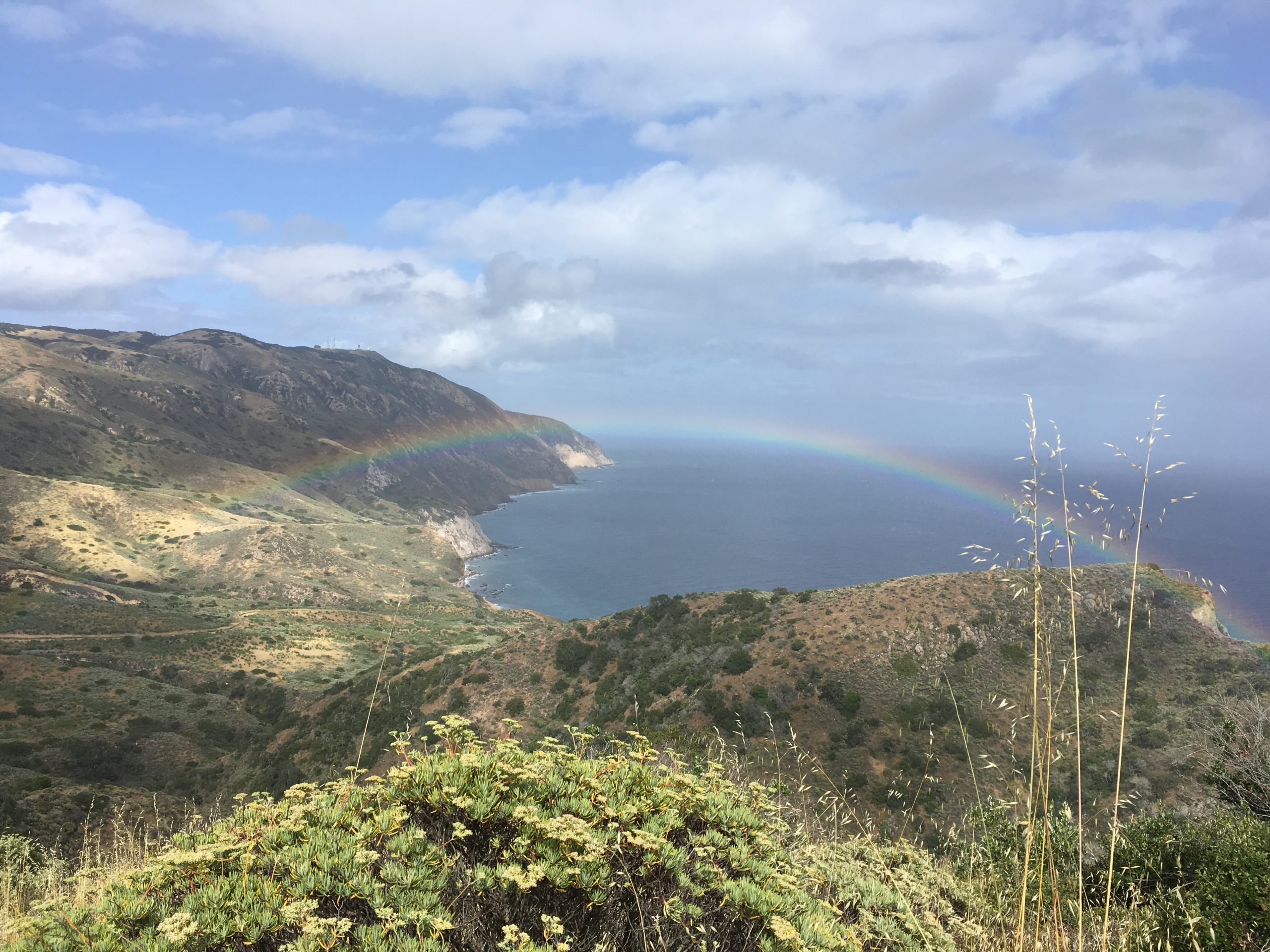
A rainbow on Santa Cruz Island. Photo credit: Heather Schneider. -
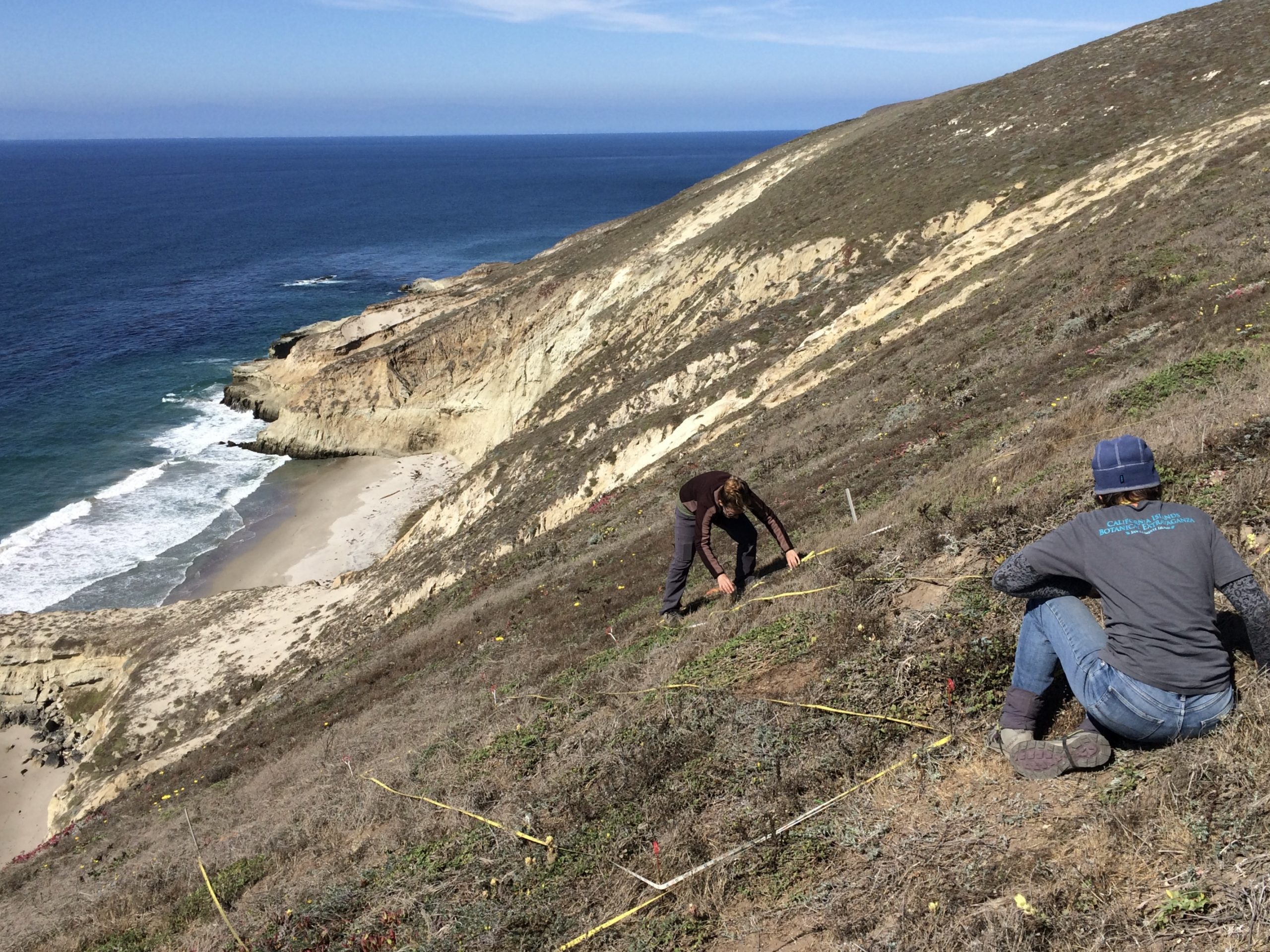
Setting up and reading demography plots for the federally endangered soft-leaved paintbrush (Castilleja mollis) on Santa Rosa Island. Photo credit: USGS. -
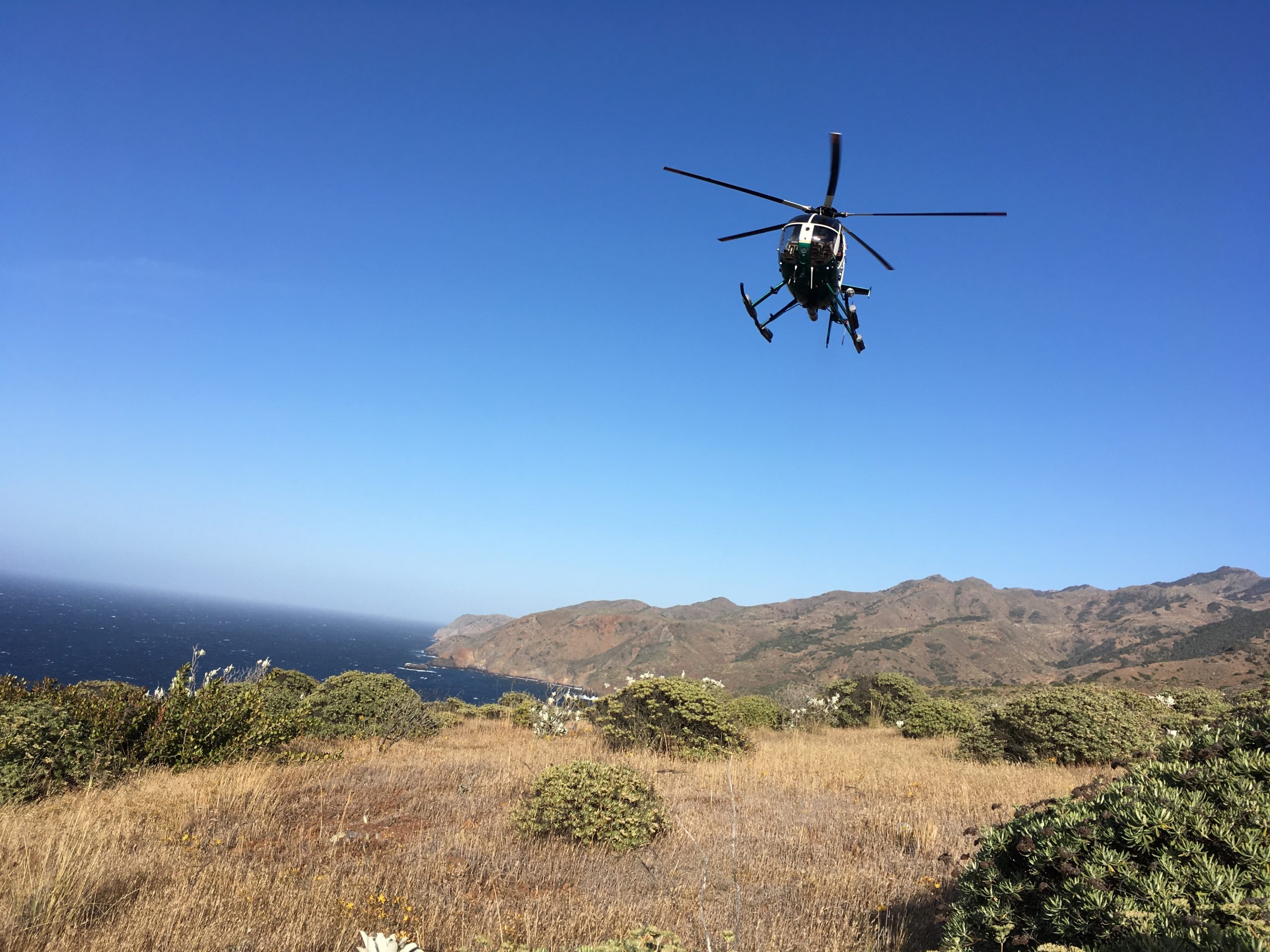
A helicopter approaches to take Heather to her next rare plant survey location on Santa Cruz Island. Photo credit: Heather Schneider.